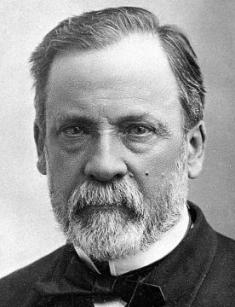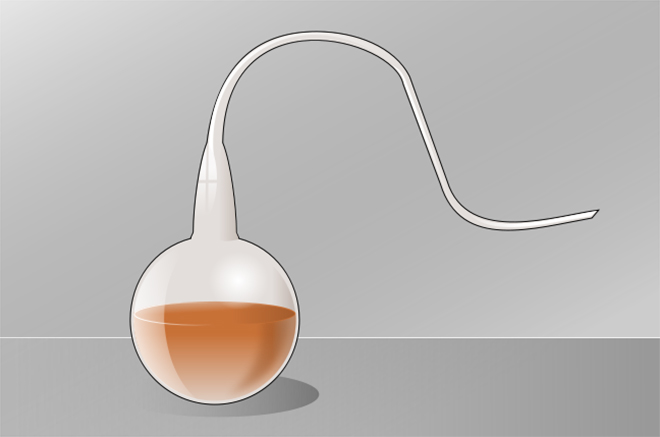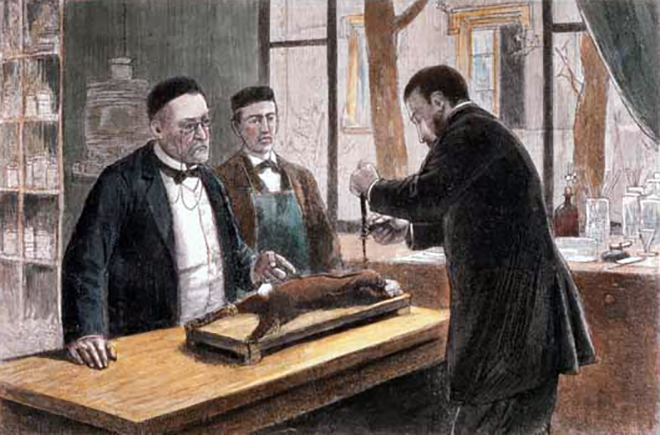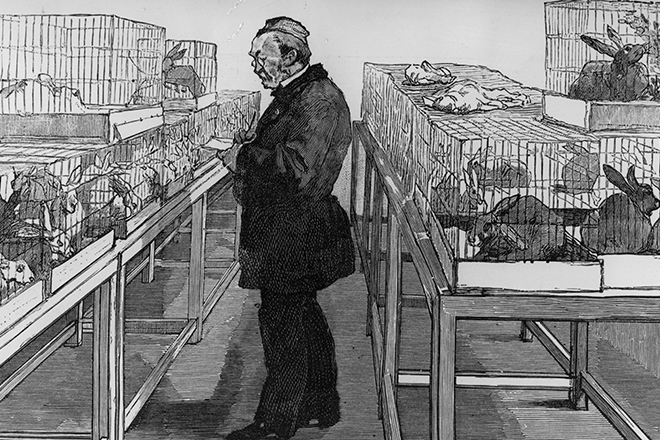
Louis Pasteur: biography
The French government called the biologist and chemist Louis Pasteur a benefactor of humanity. His contribution to science is difficult to overestimate: Pasteur proved the microbiological nature of fermentation and diseases and created the way to fight pathogenic microorganisms with pasteurization and vaccination. Today, the microbiologist’s discoveries continue to save millions of lives.
Childhood and youth
The future scientist was born in Dole, France, on September 18, 1822. The boy’s father, Jean-Joseph Pasteur, participated in Napoleon’s wars and opened a tannery later. Although the man was illiterate, he wanted to provide his son with a good education.

Louis graduated from school and entered a college with his father’s assistance. Teachers were impressed to see the young man’s diligence. Pasteur believed that studies required much persistence and wrote to his sisters that success depended on hard work and the desire to learn.
As long as Louis finished the college, he moved to Paris to enroll et the École Normale Supérieure. In 1843, the young talent passed the entrance exams without many pains and earned his degree four years later.

At the same time, Pasteur paid much attention to painting, and his results were pretty good: the young artist was known as a great portraitist of the 19th century. At the age of 15, Louis created the portraits of his mother, sisters, and friends; in 1840, he became the Bachelor of Arts.
Biology
Although Louis was a person of many talents, he preferred science. At 26, he became a professor of physics thanks to the discovery of the dihydroxysuccinic acid structure. As the scientist was studying organic chemistry, he realized his life mission pertained to biology and chemistry.
Pasteur worked at the Dijon Lycée for a while and went to the University of Strasbourg in 1848. The biologist began to study the process of fermentation that brought him much fame later.

In 1854, the scientist took the position of the dean at the University of Lille but did not stay there for a long time. Two years later, Pasteur left for Paris and joined his alma mater, the École Normale Supérieure, as a director of scientific studies. He held many successful reforms and proved to be a great administrator. Pasteur’s strict system of exams enhanced students’ knowledge and the school prestige.
Simultaneously, the microbiologist continued his research on the dihydroxysuccinic acid. He used a microscope to study wort and found out that the nature of fermentation was not chemical, as Justus von Liebig claimed. As Pasteur revealed, the yeast activity in fermenting liquor was present.
In 1860-1862, Pasteur focused on the theory of autogenic in microorganisms; many researchers believed it was trustworthy. Louis took a nutrient mass, heated it until the temperature destructed all microorganisms, and put it into a swan-neck flask.

No matter for how long the flask with the mass was left in the air, life did not originate: bacteria spores were left in the long, bent neck. If the neck were broken off or washed with some liquid, microorganisms would appear soon. Thus, the French scientist rejected the popular theory and demonstrated that germs were incapable of autogenesis and had to be brought from the outside. In 1862, the French Academy of Sciences awarded Louis with a prize for the discovery.
Pasteurization
The scientific breakthrough came with the practical task: wine producers asked Pasteur to find the reasons for wine spoiling in 1864. The biologist studied the liquid components and revealed there was something else apart from the yeast in the product. He offered to warm the wort up to 60 grades to have the microorganisms destroyed.

This method was introduced to beer and wine production, as well as other lines of the food industry. It was named after its creator – pasteurization.
The discovery made the scientist famous, but Louis could not enjoy it due to his personal pain: his three children died of typhoid fever. Because of this tragedy, Pasteur began to study contagious diseases.
Vaccination
Louis Pasteur researched wounds, abscesses, and ulcers carefully and discovered several infectious agents, such as streptococcus and staphylococcus. Besides, the biologist studied chicken cholera and tried to find a cure for it. The solution of the problem dawned upon him suddenly.

The professor left a culture with cholera in a temperature-regulated chamber and forgot about it. When its dried form was given to chickens, they did not die: instead, they had a light form of the disease. Once again, Pasteur infected the birds with the regular bacteria; they were unharmed.
Thus, the biologist discovered the way to avoid many diseases: it was necessary to inject weakened disease-producing germs. Vaccination (from Latin “vacca” – “cow”) came to existence. Pasteur used the name in honor of the famous English scientist Edward Jenner who tried to prevent people from smallpox and transfused cows’ blood to them: the animals’ form of smallpox was safe for humans.

The experiment with chickens helped Louis create the vaccine for Siberian plague. France saved a lot of money thanks to the invention, and the great biologist became the member of the French Academy of Sciences with a life-long pension.
In 1881, Pasteur witnessed a girl’s death; a rabid dog had bitten her. The scientist decided to create a vaccine against the deadly disease, but the virus existed only in brain cells; the problem was to get the weakened form. Louis spent days in the laboratory and conducted many experiments on rabbits: he infected them with rabies at first and then dissected their brain. It was extremely dangerous to collect rabbits’ saliva, yet Pasteur did it. Finally, he managed to create the vaccine from a rabbit’s dried brain. Many professionals view it as the microbiologist’s major achievement.

Pasteur did not dare to use the vaccine on humans for a while. In 1885, the mother of nine-years-old Joseph Meister came to him. The boy had been bitten by a rabid dog and had no chance to survive; the vaccine was the only chance left. The child survived; 16 other people were saved soon. Following the success, the vaccine began to be used worldwide.
Personal life
In 1848, Louis Pasteur joined the University of Strasbourg and received an invitation to the rector’s house. This is where he met the daughter of his boss, Marie Laurent. The next week, the biologist wrote a letter to her father and asked for Marie’s hand in marriage. Although the young people had met only once, Louis did not doubt his choice.

Pasteur was entirely honest: he said a kind heart and good health were everything he possessed. Judging by the scientist’s photos, he was not handsome and had no fortune or connections.
The rector believed the young man’s feelings and gave the couple his blessings. Louis and Marie married on May 29, 1849, and spent 46 years together. The woman became a tender supporter and help for her husband. Five children were born in this union; three of them died of typhoid fever.
Death
45-year-old Pasteur had a blood stroke and could not move his arm and leg; however, he continued to work hard. The biologist’s experiments were often risky, and the family was always anxious about him.
The great scientist died on September 28, 1895, when he was 72; the complications from several strokes were the cause of death. He was buried at Notre-Dame de Paris; his remnants were taken to the Pasteur Institute in Paris.

In his lifetime, the scientist received about 200 awards from almost all countries. In 1892, the French government presented the medal to his 70th birthday with the words “patrimoine de l'humanité”. In 1961, a lunar crater was named after Pasteur, and a stamp with his portrait appeared in Belgium in 1995.
Nowadays, more than 2000 streets all over the world (the United States, Argentina, Ukraine, Italy, Iran, Cambodia, etc.) are named in honor of Louis. The famous Saint-Petersburg Pasteur Institute is operating in Russia.
Bibliography
- Louis Pasteur. Etudes sur le Vin. – 1866.
- Louis Pasteur. Etudes sur le Vinaigre. – 1868.
- Louis Pasteur. Etudes sur la Maladie des Vers à Soie (2 volumes). – 1870.
- Louis Pasteur. Quelques Réflexions sur la Science en France. – 1871.
- Louis Pasteur. Etudes sur la Bière. – 1976.
- Louis Pasteur. Les Microbes organisés, leur rôle dans la Fermentation, la Putréfaction et la Contagion. – 1878.
- Louis Pasteur. Discours de Réception de M.L. Pasteur à l'Académie française. – 1882.
- Louis Pasteur. Traitement de la Rage. – 1886.




